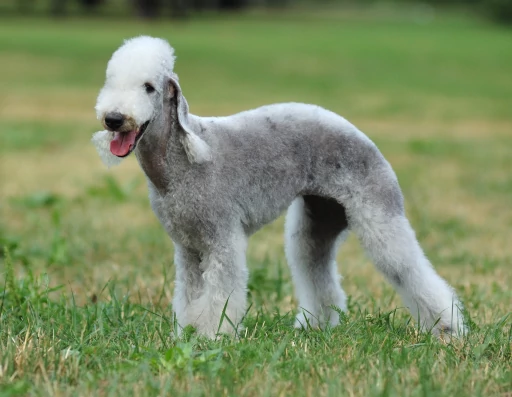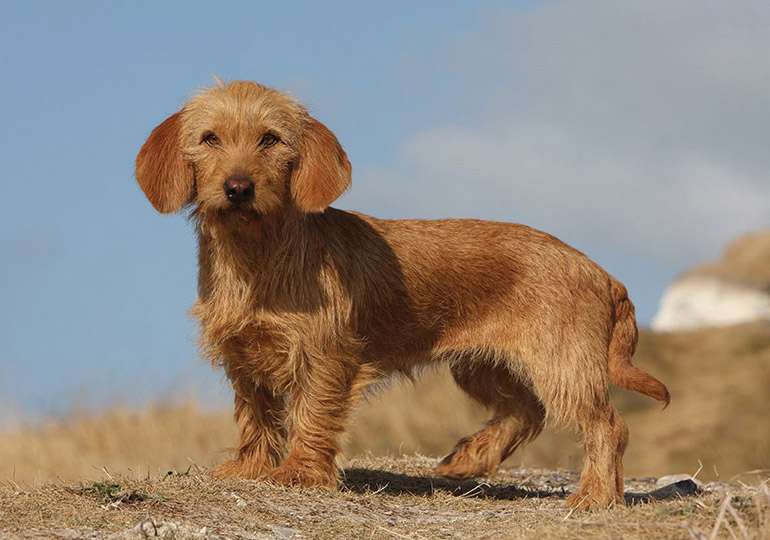
They are renowned for being incredibly swift and having tremendous endurance, and they have strong swimming abilities equivalent to those of water dogs like the Newfoundland. They enjoy the winter and can maneuver on ice or on deep snow with a Husky-like turn of speed by utilizing their muscular noses as a plough.
Physical Characteristics
Dogs must have rounder heads without any stops. Their lips are snug and devoid of flies, and their eyes are small and almond-shaped. The body must be somewhat longer than it is tall, and the back must be arched.
Its pear-shaped, tufted head, curly coat, arching back, lithe height, and beautiful, springy movement are its most distinctive features. The jaw is longer than the skull, and the head is deep, thin, and rounded. A unique Roman arch is present on the thin muzzle. The triangular ears feature quirky, “cotton-puff” tips and hang flat against the cheeks. Standing tall above a powerful and supple body is the long, tapering neck. The front legs are straight with hare-like feet, the tail is low and tapering, and the chest is deep. The dog weighs 17 to 23 pounds and has a height at the withers of 15 1/2 inches for females and 16 1/2 inches for males (eight to 10 kilograms).
The distinctive blend of firm and soft hair in the supple, curly coat covers the bony structure on the muzzle and front legs, where it thickens. Blue, sandy, liver, tan, blue and tan, and sandy and tan are the colors of the coat. The color blue is more popular and in style than any other right now.
Care as a Pet/ In Captivity

Diet
The Bedlington terrier should flourish on either a high-quality commercial dog diet or home-prepared dog food (under veterinary supervision). They can gain weight, like many dogs, therefore a veterinarian should always keep a close eye on their calorie intake and weight. It’s crucial that this energetic dog always has access to fresh, clean water. A Bedlington terrier’s diet must contain between 18% and 20% protein. It is packed with amino acids, which are essential for creating the cell’s building components.

Grooming
This breed necessitates routine grooming and trimming. It’s crucial to maintain these terriers’ ears clean and properly cut because they are prone to ear infections.
Many Bedlington owners are pleasantly surprised to realize that these dogs don’t shed much, if at all. The crisp hair of their coat is a mix of both soft and rough (but not wiry) hair. They can be trimmed at home using electric clippers and scissors or brought to a professional groomer, but because of how quickly their hair grows, they will need to be clipped about every two months. Additionally, their coat will require brushing and/or combing once or twice a week.
Bedlington dogs, like all dogs, require basic maintenance, such as frequent nail trimming, daily tooth brushing, and routine ear inspection and cleaning. The breed’s ears must also be trimmed to tidy up the ear tassels because of their distinctive shape and hair distribution.
Training
Early training and socialization should be a priority because Bedlington terriers, like most terriers, can be stubborn but smart and eager to please. This breed won’t respond to harsh teaching techniques or physical punishment because it will most likely result in a power struggle with its owner. Instead, owners who aren’t apathetic and are prepared to be stern and persistent while using positive-reinforcement methods, such as rewarding good behavior with praise and food should do training.
Table





